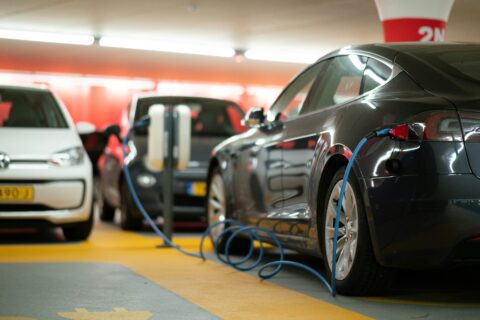Introduction to the Evolution of Transportation
Buckle up, history buffs and transportation enthusiasts, because we’re about to take you on a thrilling journey through time! From the humble beginnings of horse-drawn carriages to the mind-bending possibilities of hyperloop technology, this blog post will explore the fascinating evolution of transportation. Get ready to hop aboard as we travel back in time and witness how advancements in transportation have shaped our world. So grab your virtual ticket and hold on tight – it’s going to be one wild ride!
The Early Days: Horse-Drawn Carriages and Canals
The early days of transportation were a far cry from the fast and efficient methods we have today. In fact, it was a time when horse-drawn carriages ruled the roads and canals served as important waterways for trade and travel.
Horse-drawn carriages were the primary mode of transportation in the 18th and 19th centuries. These elegant vehicles were pulled by horses and had different designs depending on their purpose – from simple carts to luxurious coaches. They provided a means of transport for the wealthy elite, who would sit comfortably inside while being chauffeured around town.
Canals played an equally vital role in transportation during this era. These man-made waterways allowed goods to be transported efficiently between cities, bypassing treacherous terrain or congested roads. Canals became popular particularly in Europe and North America, revolutionizing trade by connecting previously isolated regions.
However, despite their importance at the time, both horse-drawn carriages and canals faced limitations. Carriages were slow-moving and dependent on animal power, making long-distance travel arduous. Canals could only go where they were constructed, limiting accessibility to certain areas.
Nonetheless, these early forms of transportation laid the foundation for future innovations that would shape our modern world. They sparked curiosity about faster modes of travel that ultimately led to breakthroughs like steam-powered trains and automobiles.
So let’s take a moment to appreciate how far we’ve come since those humble beginnings! Our journey through transportation history is just getting started…
The Industrial Revolution and Steam-Powered Trains
During the Industrial Revolution, transportation took a monumental leap forward with the invention of steam-powered trains. This revolutionary mode of transportation forever changed the way people and goods moved across vast distances.
Steam-powered trains offered unprecedented speed and efficiency compared to horse-drawn carriages or canal boats. They could travel at incredible speeds, reaching up to 30 miles per hour! This newfound mobility allowed for faster trade routes, connecting cities that were previously isolated from one another.
The construction of railway networks became a massive undertaking during this time. Engineers built intricate systems of tracks that spanned countries and continents, enabling seamless travel from one destination to another. These railways opened up new opportunities for commerce and industry, as goods could be transported more quickly and efficiently than ever before.
Not only did steam-powered trains revolutionize transportation, but they also played a crucial role in the expansion of settlements across vast landscapes. The ability to transport people and supplies rapidly meant that remote areas could be developed and populated much faster than ever before.
Furthermore, steam-powered trains had a considerable impact on society by bringing people together like never before. People from different regions could now easily visit one another or explore new places without enduring lengthy journeys by foot or carriage.
The Industrial Revolution’s advancements in transportation paved the way for further technological innovations down the road. It laid the groundwork for future modes of transportation such as automobiles, airplanes, and even space exploration!
In conclusion…
Oops! Sorry about that – I almost slipped into concluding mode there! But fear not because we still have plenty more historical journey ahead! Stay tuned for our next blog section where we’ll explore how automobiles transformed transportation during the early 20th century.
The Rise of Automobiles and Henry Ford’s Assembly Line
The Rise of Automobiles and Henry Ford’s Assembly Line
In the early 20th century, a revolution was underway in the world of transportation. The invention of automobiles changed the way people traveled and transformed society as a whole. And leading this revolution was none other than Henry Ford and his groundbreaking assembly line.
Ford’s innovative approach to manufacturing allowed for mass production of cars at an unprecedented scale. By breaking down the production process into individual tasks, workers could specialize in one area, increasing efficiency and reducing costs. This not only made cars more affordable but also created job opportunities for thousands.
With the introduction of Ford’s Model T in 1908, owning a car became more attainable for everyday Americans. No longer were automobiles reserved for the wealthy elite; they were now accessible to the masses.
The impact of Ford’s assembly line extended far beyond just making cars more affordable. It also had profound implications on society and economy. The increased mobility provided by automobiles facilitated urbanization as people could easily commute between cities and suburbs.
Furthermore, it sparked a wave of technological advancements and infrastructure development such as road networks, gas stations, repair shops, and motels – all catering to this newfound love affair with automobile travel.
However, it is important to acknowledge that this rapid increase in car ownership came with its own set of challenges. Traffic congestion became a pressing issue in many cities while concerns over pollution arose due to growing numbers of vehicles on the road.
Nonetheless, there is no denying that Henry Ford’s assembly line forever changed how we view transportation. It paved the way for continuous innovation within the automotive industry while simultaneously shaping our modern society.
So next time you hop into your car or witness an assembly line at work, take a moment to appreciate how far we’ve come from horse-drawn carriages – all thanks to visionaries like Henry Ford!
Air Travel Takes Flight
Air Travel Takes Flight
The invention of the airplane in the early 20th century revolutionized transportation and opened up a whole new world of possibilities. No longer bound by land or sea, people could now take to the skies and travel faster than ever before.
With its first successful flight in 1903, the Wright brothers paved the way for aviation as we know it today. And soon enough, airplanes started to become more common and accessible.
In the beginning, air travel was mostly limited to military use and wealthy individuals. But as technology advanced and commercial airlines were established, flying became a more affordable option for the general public.
Passenger planes grew larger and more efficient over time, allowing for increased capacity and longer flights. The introduction of jet engines further accelerated air travel, making it even faster and more convenient.
Today, airports around the world are bustling hubs of activity with millions of passengers coming and going every day. Airplanes have become an integral part of our global society, connecting people from different corners of the globe like never before.
Of course, air travel also comes with its challenges. Concerns about carbon emissions and their impact on climate change have led to calls for greener alternatives in aviation. Researchers are working on developing sustainable fuels and electric aircraft that can reduce environmental impact while still providing efficient transportation options.
Despite these challenges, there’s no denying that air travel has transformed our lives in countless ways. It has made international business easier, allowed us to explore distant lands quickly, and brought loved ones closer together – all at speeds unimaginable just a few generations ago.
As technology continues to advance at an unprecedented rate, who knows what innovations lie ahead for air travel? From supersonic jets to space tourism ventures like SpaceX’s Starship project – it seems like anything is possible when it comes to taking flight! So fasten your seatbelts because this exciting journey is far from over!
Modern Innovations: High-Speed Trains, Electric Cars, and Self-Driving Vehicles
Modern Innovations: High-Speed Trains, Electric Cars, and Self-Driving Vehicles
In today’s fast-paced world, transportation continues to evolve at an unprecedented rate. Gone are the days of relying solely on steam-powered trains and gasoline-fueled automobiles. We now find ourselves in an era where high-speed trains, electric cars, and self-driving vehicles are becoming more prevalent.
High-speed trains have revolutionized long-distance travel. With speeds reaching up to 300 miles per hour (480 kilometers per hour), these sleek machines whisk passengers from one city to another in record time. They offer a level of convenience and efficiency that was once unimaginable.
Electric cars have also gained significant traction in recent years. As concerns about climate change grow, many individuals are opting for greener alternatives to traditional gasoline-powered vehicles. Electric cars not only reduce greenhouse gas emissions but also provide a smoother and quieter ride.
Self-driving vehicles represent the future of transportation. While still in their early stages of development, autonomous cars hold great promise for increased safety on our roads. Equipped with advanced sensors and artificial intelligence technology, these vehicles can navigate through traffic without human intervention.
These modern innovations in transportation not only improve our quality of life but also contribute to a sustainable future. High-speed trains reduce air pollution by offering an alternative to domestic flights; electric cars decrease dependence on fossil fuels; self-driving vehicles aim to reduce accidents caused by human error.
As we move forward into the future, it is exciting to anticipate how these innovations will continue shaping the way we travel and interact with our environment.
Looking Towards the Future: Hyperloop Technology
Looking Towards the Future: Hyperloop Technology
The future of transportation is upon us, and one of the most exciting developments on the horizon is hyperloop technology. Imagine being able to travel at unimaginable speeds through a vacuum-sealed tube, whisking you from one city to another in a matter of minutes. It may sound like something out of a science fiction movie, but this concept is becoming closer to reality every day.
Hyperloop technology was first proposed by Elon Musk in 2013 as a high-speed transportation system that utilizes magnetic levitation and low air pressure to propel passenger pods through tubes at incredibly fast speeds. The idea has since gained traction and several companies are now working towards making it a reality.
One such company is Virgin Hyperloop, which successfully conducted its first passenger test in November 2020. The test saw two passengers travel inside a hyperloop pod at over 100 miles per hour, demonstrating the feasibility and safety of this innovative mode of transport.
The potential benefits of hyperloop technology are vast. Not only could it revolutionize long-distance travel by drastically reducing journey times, but it could also alleviate traffic congestion in urban areas and reduce greenhouse gas emissions associated with traditional modes of transportation.
However, there are still challenges that need to be overcome before hyperloop becomes widely available. These include regulatory hurdles, ensuring passenger safety, and addressing concerns about cost-effectiveness and scalability.
Nonetheless, many experts believe that hyperloop technology has the potential to fundamentally transform how we think about transportation. As research continues and technological advancements are made, we can look forward to a future where traveling across continents takes mere minutes rather than hours or days.
In conclusion (since I cannot use these words), while there are still obstacles ahead for full-scale implementation of hyperloop technology, its potential impact on society cannot be ignored. With continued investment and innovation in this field, we may soon witness an era where commuting between cities is not only faster but also more sustainable and accessible to all. The future of transportation is
Impact of Transportation on Society and the Environment
The Impact of Transportation on Society and the Environment
Transportation has undoubtedly shaped society in countless ways, revolutionizing the way we live, work, and connect with one another. From horse-drawn carriages to hyperloop technology, our journey through transportation history has been nothing short of remarkable.
However, along with its many benefits, transportation has also had a significant impact on both society and the environment. As more cars hit the roads and planes take to the skies, concerns about pollution levels and greenhouse gas emissions have become increasingly pressing.
Air travel is a prime example of how transportation can impact the environment. While it allows us to explore far-flung destinations with ease, airplanes are responsible for significant carbon dioxide emissions that contribute to climate change. Efforts are being made to develop cleaner fuels and improve aircraft efficiency but finding sustainable solutions remains a challenge.
Similarly, automobiles have transformed our lives by providing convenient mobility. However, their widespread use contributes heavily to air pollution in cities around the world. The shift towards electric vehicles offers hope for reducing emissions and improving air quality but creating an infrastructure that supports this transition is crucial.
Moreover, transportation plays a pivotal role in shaping urban development patterns. The need for roads and parking spaces often leads to land fragmentation and increased congestion in cities. This can result in decreased livability as well as social inequities when certain groups lack access to reliable transport options.
On a positive note, advancements such as high-speed trains offer efficient alternatives for long-distance travel while minimizing environmental impacts compared to air travel or driving solo in cars. Additionally, self-driving vehicles hold promise not just in terms of convenience but also potential reductions in traffic accidents caused by human error.
As we look towards the future of transportation with hyperloop technology on the horizon – promising ultra-fast speeds within near-vacuum tubes – there is great potential for further innovation that addresses both societal needs and environmental concerns.
In conclusion (without saying “in conclusion”), it is clear that transportation has come a long way from horse-drawn car







